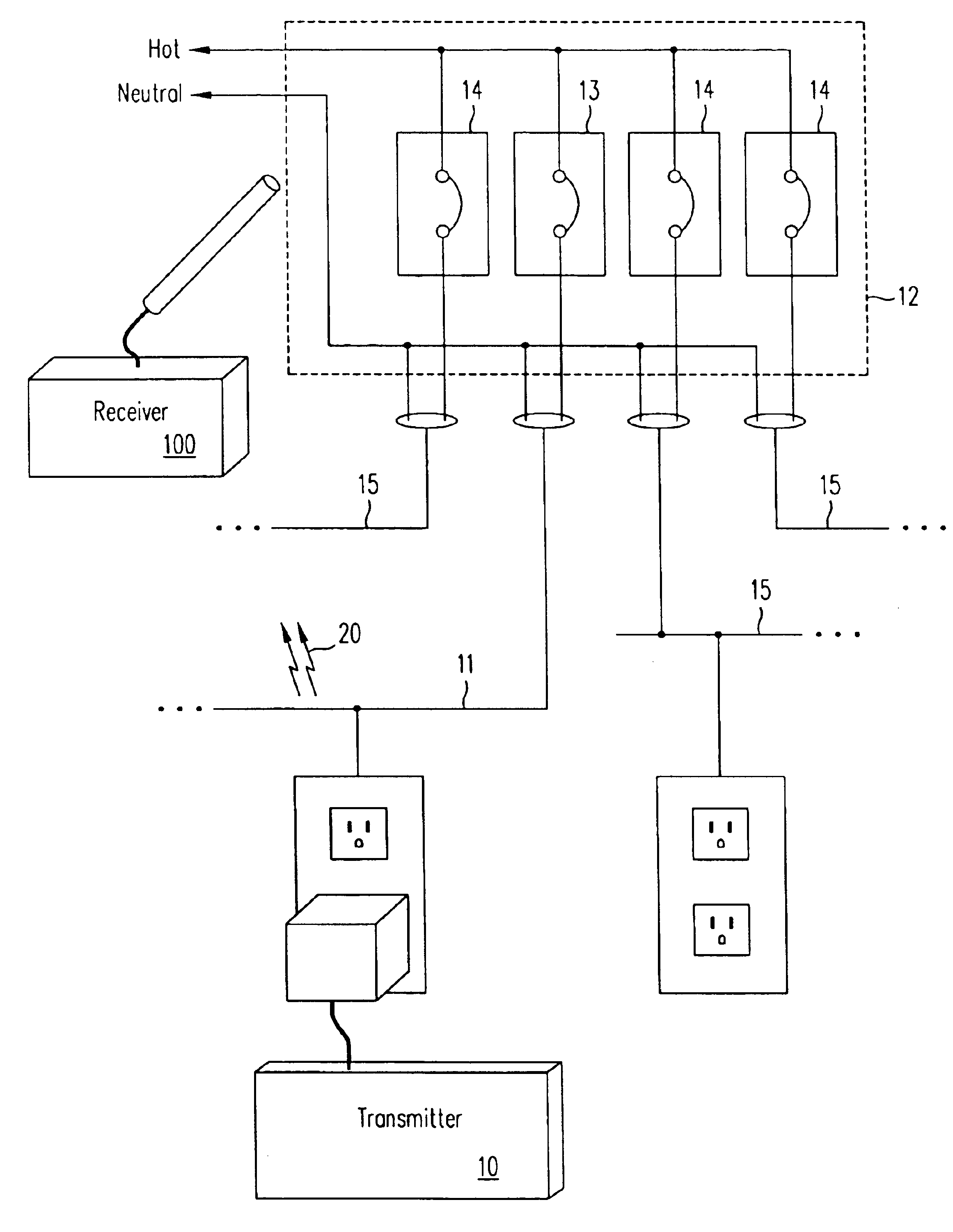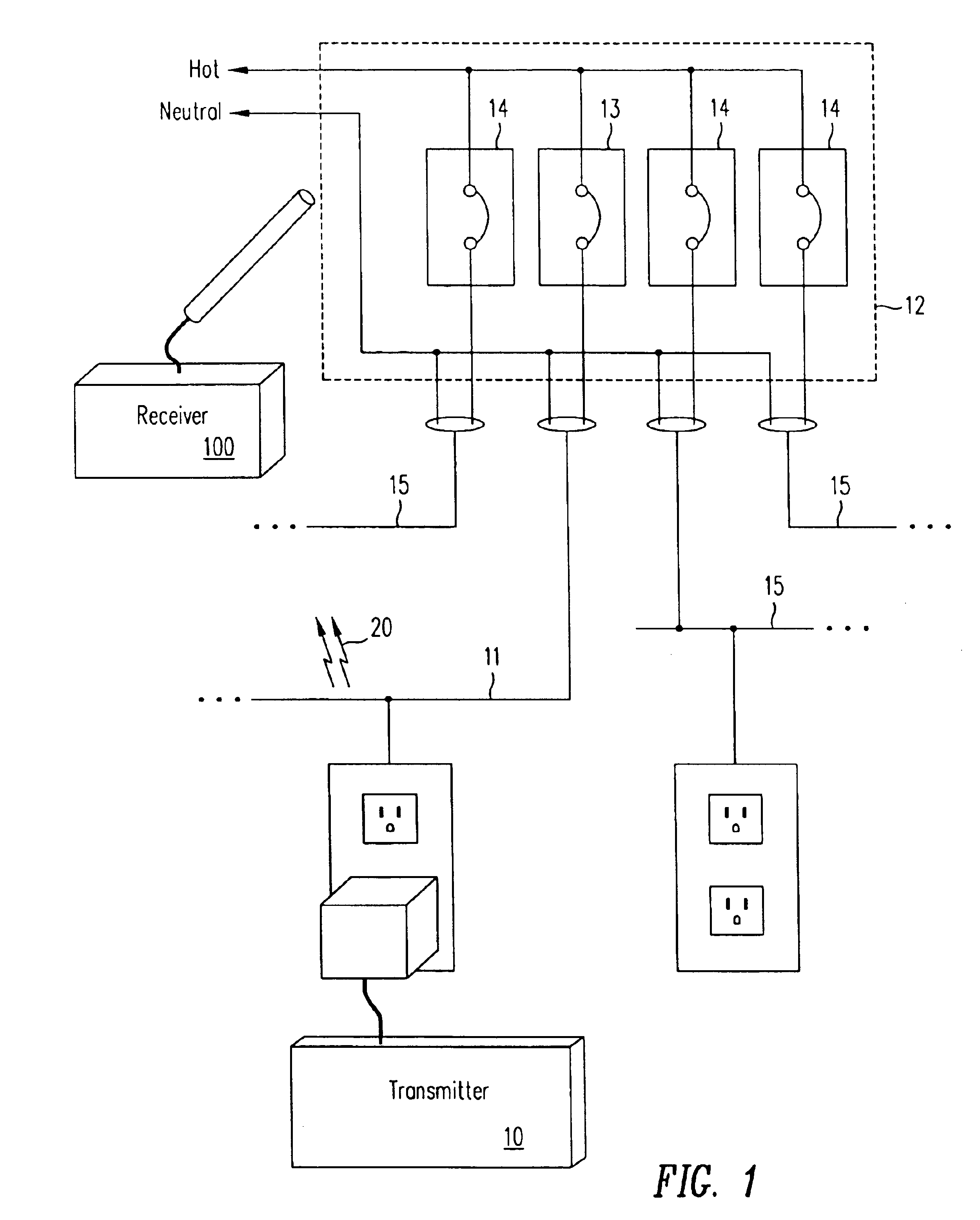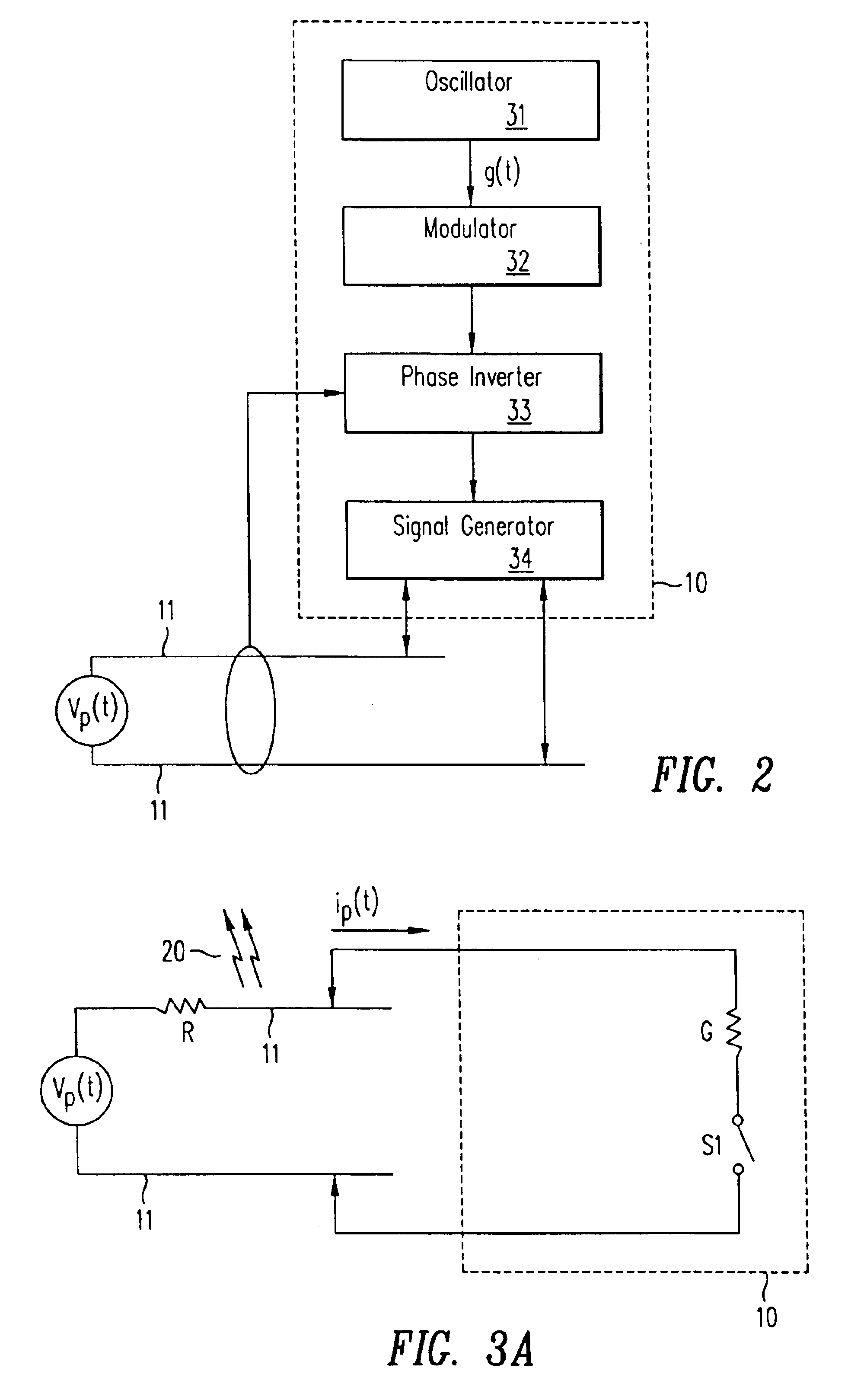Electrical circuit tracing and identifying apparatus and method
- Summary
- Abstract
- Description
- Claims
- Application Information
AI Technical Summary
Benefits of technology
Problems solved by technology
Method used
Image
Examples
Embodiment Construction
[0039]FIG. 1 illustrates how a transmitter 10 and a receiver 100 are used with a power distribution system. In some embodiments of the present invention, a transmitter 10 directly connects to a power distribution system through a wall outlet. In some embodiments, the transmitter 10 directly connects to the distribution wiring by, for example, jumper wires. The transmitter 10 then energizes a circuit 11 of the power distribution system. A receiver 100 detects electromagnetic radiation 20 induced by the transmitter 10. The receiver 100 senses the electromagnetic radiation 20 emanating from the energized wires of the circuit.
[0040]With proper modifications, some embodiments of the present invention may be used to identify circuit elements or to trace circuits on powered or un-powered lines. Powered lines may carry either alternating current (AC) or direct current (DC) at a low or high voltage.
[0041]For un-powered lines, power is disconnected from the circuit breaker box 12. The hot and...
PUM
 Login to View More
Login to View More Abstract
Description
Claims
Application Information
 Login to View More
Login to View More - R&D
- Intellectual Property
- Life Sciences
- Materials
- Tech Scout
- Unparalleled Data Quality
- Higher Quality Content
- 60% Fewer Hallucinations
Browse by: Latest US Patents, China's latest patents, Technical Efficacy Thesaurus, Application Domain, Technology Topic, Popular Technical Reports.
© 2025 PatSnap. All rights reserved.Legal|Privacy policy|Modern Slavery Act Transparency Statement|Sitemap|About US| Contact US: help@patsnap.com



